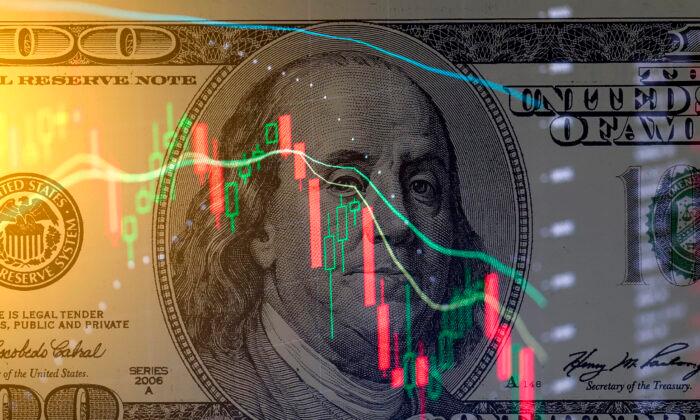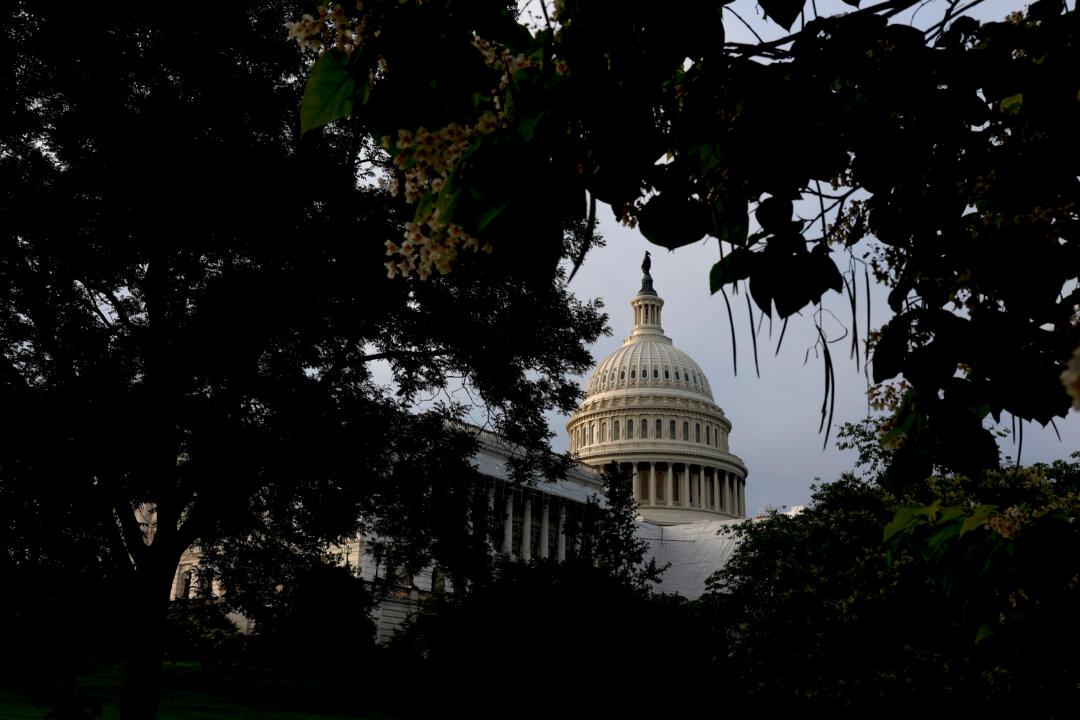The federal state of emergency for COVID-19 ended on May 11. Along with that ends the terrible travel restrictions that have stopped the unvaccinated from visiting the Land of the Free. It seems incredible that we could ever become used to this.
But it happened, and it went on for three years.
That should serve as a warning to all of us. Never get used to the new normal. The moment we stop caring is the moment when our overlords decide that they can get away with worse. It seems like the only thing that truly keeps power in check is informed public opinion backed by action.
The same is true for inflation. The public should be demanding an immediate end to this because it’s another form of taxation. Instead, the public seems unconcerned—or perhaps just beaten down and abused to protest much.
Once again, as it has been for more than two years, the new inflation numbers were reported with great celebration that we’re finally winning. But are we really? The target rate is 2 percent. The latest Consumer Price Index numbers are 2 1/2 times that, coming in at 4.9 percent. The figure has decelerated from the highs. The same is true of the Producer Price Index, which has reported its 10th straight month of a declining rate of increase.
The new normal is 4 to 5 percent, meaning that the federal government is taxing you 5 cents on the dollar every year. By any historical standard, this is intolerable. It matches the two worst years since the great inflation of the late 1970s and yet the consensus is that this is just fine.
See how this works? They’ve been doing this to us for three years. They keep making our lives worse and then letting up a bit. The new thing is better than the old thing so we have a sense of relief, even as we forget what life was like before all this began.
We’re like dogs with a leash that’s being variously shortened and lengthened, but we’re never really set free.
Think about it this way. Do you prefer 10 percent inflation now and zero percent next year, or 6 percent now and 6 percent next year? The second option is worse but it might not feel worse. If I were in charge of devaluing the currency in ways that the public wouldn’t notice, I would certainly choose the second path. The slower you go, the less you inspire public revolt.
Meanwhile, another way to see the inflation problem is to look at the mirror image: the purchasing power of the dollar. If you set the 2020 valuation at 100, we have slipped to 85 cents, and the value continues to fall. Everyone has completely forgotten about old prices by now. There will be no going back. In the name of stimulus, they robbed us.
![(Data: Federal Reserve Economic Data [FRED], St. Louis Fed; Chart: Jeffrey A. Tucker)](/_next/image?url=https%3A%2F%2Fimg.theepochtimes.com%2Fassets%2Fuploads%2F2023%2F05%2F11%2Fid5258388-1-JAT-2023.05.11-1200x856.png&w=1200&q=75)
Back when everyone truly cared about inflation, their excuses were broken supply chains due to COVID-19 pandemic controls and then sanctions against Russia. Even back then, no one official would speak about the astonishing explosion of paper money that flooded the entire world in 2020 and 2021. That absolutely guaranteed a bout of wicked inflation, which began to arrive right on schedule.
For reasons I can’t fathom, the most obvious explanation for declining purchasing power is never uttered by any official sources.
Now, we’re in an odd position. The money supply is falling very dramatically—fully 5 percent in the past six months. That’s due to a variety of factors extending from the dramatic shift away from zero interest rates to rates that are more in line with real market conditions.
This is a hugely recessionary sign. It means draining credit access from many institutions that have gotten used to living on it. An economy with a falling money supply is the inverse of one with a rising money supply: The heady feeling of infinite prosperity turns in the other direction.
If this is true, why does inflation seem so persistent? It’s because of the factor about which we read next to nothing but is just as important for determining the price level. That’s velocity, which is the monetary equivalent of the transmission rates—the descriptive measure of how fast money changes hands. During the lockdown period, velocity crashed. But that lasted only so long. With velocity on the increase and the pace of increase bumping up against a falling money supply, you still have inflationary forces at work to drive up prices.
![(Data: Federal Reserve Economic Data [FRED], St. Louis Fed; Chart: Jeffrey A. Tucker)](/_next/image?url=https%3A%2F%2Fimg.theepochtimes.com%2Fassets%2Fuploads%2F2023%2F05%2F11%2Fid5258389-2-JAT-2023.05.11-1200x923.png&w=1200&q=75)
To add another wrinkle, there’s some major downward pressure developing in producer prices. This isn’t like a monetary phenomenon. Breaking down the data, this seems more like recessionary forces weighing on prices. It’s reflected in the labor markets, growing bankruptcies of large companies, and increasingly hard times for all the industries that were thriving just a few years ago.
I’m on record as predicting a very visible recession by summer that will extend until this time next year. However, there’s no reason to think that it‘ll be coupled with any dramatic declines in consumer goods prices. With velocity still on the rise and a long way to go, inflation will likely remain persistent at current levels. That creates stagflation, a word we’ll hear much more about in the coming months.
The arrival of this sad state of affairs represents a major reversal of progress we’ve made for 40 years toward more stable money. It was all blown up with the pandemic response, along with so much else. Property rights aren’t secure. Privacy is routinely invaded. Censorship is everywhere obvious. The agencies of the administrative state are captured. Economic growth isn’t even a prospect. And liberty is very much on the decline.
If we’re ever to fix these conditions, a sound dollar must be part of the reform agenda. Instead, there are efforts to go in the other direction in the form of a central bank digital currency. This is a real test of every candidate for political office: Tell us your view of the CBDC!
Nearly every country that has fallen into despotism in the past is guilty of violating the core principle of sound money. But truly every principle of freedom itself is at stake today.
The more we put up with it, the more they get away with. This is no time for anyone to be just fine with a rate of inflation that will, in a few years’ time, cut the 2020 dollar to half its value. Sound money is a populist issue. To bring it about will require knowledgeable, honest, and courageous leaders.







